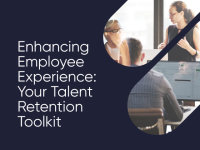Top 10 gamification blogs
Contact centers need well-defined business goals that are easily tracked with captured speech analytics data. To learn more about gamification, read o...
CallMiner Outreach is here! |Learn about the future of CX

Solutions
Products
Customers
Solutions
Products
Customers
Resources
Company
The Team at CallMiner
April 09, 2019


Gamification is a fun and popular way to improve agent performance, satisfaction, and effect the outcomes from those contacts with your customers. Using analytics and gamification is an effective way to encourage successful behaviors with the right incentives to measure, monitor, and promote the KPI’s vital to your contact center’s and company’s success.
In a recent webinar with employee engagement and gamification experts nGuvu, we covered what gamification is, what it can be in regards to a formal platform, and what it can be from a strategy standpoint.

70% of employees are disengaged from work costing US businesses 300 billion each year according to a recent Gallup poll.
Symptoms of low engagement include:
Successful gamification programs requires understanding the fundamental distinction between motivational triggers and using them in your environment to achieve the desired result. Motivators vary depending on an employee’s personality and generation. Millennials are different from Generation X and Baby Boomers. Gamification has to be customized to fit different types of employees based on intrinsic and extrinsic motivators.
Defenders is the premier provider of ADT home security. Their focus on gamification is contest-based that shares rankings among call center teams identifying top agents, offers tangible rewards, while seeing what drives the metric outcomes they are looking for.
Contests became a simple way to drive metric outcomes that created employee engagement. While everybody participates, not everybody wins. Every contest includes five parts to be successful.
1. Start with the End in Mind Understanding what business objective you want to drive. That can include metrics or a business behavior.
2. Timeline This includes when it should take place, how long it should last, and how to keep employees focused on a specific metric for a certain period of time.
3. Clearly Outline Rules How to participate and how to win. Some contests include qualifying metrics, so there isn’t a decline in certain areas during the contest.
4. Consistent Communication Explain the why to everybody that is participating. Helping everybody understand the importance to the business and at the agent level. It is also important to explain to stakeholders why the metric is important and how the contest helps to drive that. How will you communicate results? Scorecards, emails, etc.
5. Clear ROI for Participants and Leadership What improvements will you see? Why does it benefit the business? Why is it worth the time spent coordinating and executing the contest?
Contests can be themed based on events occurring in the month or focused on new launches within the business.
Defenders has documented the following improvements across their various gamification contests:
By measuring what matters and improving the experience, you ultimately are improving the business bottom line.
Read the complete Defenders case study on improving agent performance here.
How do you balance metrics versus behaviors?
Through using speech analytics, you can measure behaviors and assign a metric to it. It is not just about descripting, but are you following the process you are looking for? Are you truly empathizing with the customer? Saying “I understand” shows some empathy but saying “I am so sorry that happened, I can’t imagine how that must feel” is the behavior of empathy. Using interaction analytics to identify what does a behavior sound like allows us to put that metric around it.
What happens if the characteristics or behavior don’t fit within a pool? How do you address that?
You can create a pool for every call. Encore Capital Group found a 10% gap and created a fourth pool for calls where the words were said but needed to be clearer. The absence of all four pools allows you to identify risks.
What happens when the contests are over? How do you sustain the behavior?
Typically, Defenders sees sustained results but not at the same results as the contest. Overall, they do maintain a higher level than pre-contest. It provides the opportunity to have conversations that you know they can do it because you have already seen it.
Do you launch games with multiple departments at one time or are they primarily one department?
Launching contests simultaneously is possible if you have a clear cut structure for establishing them.
CallMiner is the global leader in AI-powered conversation intelligence to improve customer experience (CX). CallMiner delivers the industry’s most comprehensive platform to analyze omnichannel customer interactions at scale, combining deep domain expertise with cutting edge AI analytics and machine learning. By uncovering better intelligence, CallMiner enables companies to identify areas of opportunity to drive better experiences, ultimately leading to business improvement, growth and transformational change. CallMiner is trusted by the world’s leading organizations across all major verticals including technology, media and telecom (TMT), retail, manufacturing, financial services, healthcare, and travel and hospitality.